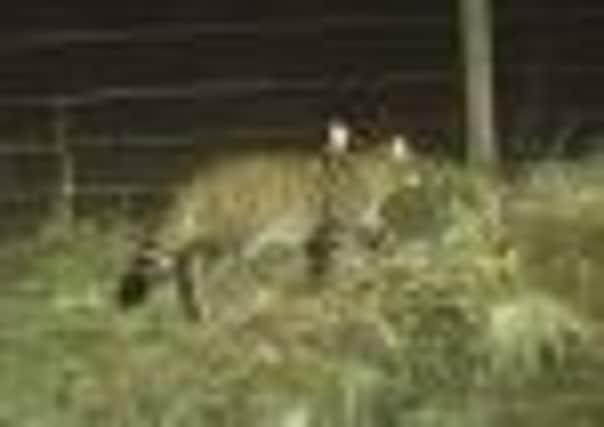Caught on camera, the Highland tigers no-one knew existedOn the prowl, the elusive wildcat is captured by camera trap


The new pockets of habitation were found during a conservation project in which camera traps were set up in the Cairngorms National Park and beyond to monitor the elusive, nocturnal animals, nicknamed Highland tigers, whose numbers were thought to have dropped to as few as 400.
The three-year study found new breeding populations within the park, as well as in Badenoch, Strathspey and Perthshire, taking the number of sightings of wildcats, which are larger and fiercer than their domestic cousins, to about 465.
Advertisement
Hide AdAdvertisement
Hide AdHowever, Dr David Hetherington, from the Cairngorms National Park Authority, warned that the species remained under threat because of cross-breeding with domestic and feral cats.


“Our aims were fourfold: to inspire the public and get them involved in saving the wildcat; to work with land managers to ensure their activities are wildcat-friendly; to encourage responsible domestic cat ownership within the Cairngorms National Park; and to carry out research to gain a greater understanding of this wonderful species,” said Dr Hetherington.
“Thanks to the public’s support and the project itself, we now understand better the distribution of wild-living cats and the levels of interbreeding.
“The use of innovative ‘camera traps’ set up to capture images of passing animals has been particularly helpful in verifying the occurrence of wildcats and hybrids.
“Wildcats have also been confirmed in some parts of the Cairngorms National Park, where they were not previously thought to inhabit.”


Local cat owners have been encouraged to participate in voluntary neutering and vaccination programmes of their pets.
The efforts of cat welfare charities to promote neutering of feral cats were enhanced through the recruitment and training of new volunteers in key areas of the national park.
Significant time was also invested in working with gamekeepers, so they could help to monitor wildcat populations. On conclusion of the project, 82 per cent of gamekeepers said they were more confident in their ability to identify a wildcat from a tabby feral cat.
Advertisement
Hide AdAdvertisement
Hide AdRon Macdonald, of Scottish Natural Heritage, said: “The lessons learned can now be taken forward into developing a new action plan for wildcat conservation in Scotland.”
Douglas Richardson, of the Royal Zoological Society of Scotland, which runs Highland Wildlife Park in Kingussie, said: “The project has not only raised the profile of the wildcat in Scotland, and therefore increased the likelihood of it being brought back from the brink of extinction, it has demonstrated the practicalities of a conservation project that could be applied in other parts of the world.”